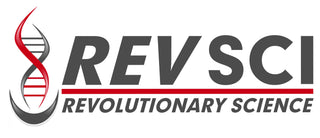
A calibration certificate is a document that you get together with an instrument that you sent for calibration. Calibration is the process of comparing an instrument’s accuracy to a known proven standard. Calibration is vital in various industries that use measuring devices. Some quality management systems have rules in place for when devices need calibration.
A calibration certificate, therefore, is a statement of the calibration results. The details on the calibration certificate vary depending on the calibration facility.
Calibration Certificate Types
You should understand the various formats of calibration certificates. That way, you can always check that your calibration certificate is in the right format. A certificate with an incorrect format is a potential issue during audits.
Discover the three different kinds of calibration certificates.
Accredited Calibration Certificate
These are documents from ISO-accredited facilities that follow the ISO format requirements. Such certificates contain the logo of the accreditation body. Other details included in these documents are:
- Calibration results before and after the adjustment
- Uncertainty results of measurements
- Conformity statement
- Traceability data
These help certify that your instrument has accredited calibration.
Non-Accredited Calibration Certificates
These are calibration certificates from institutions without an ISO accreditation. These certificates are mostly from the Original Equipment Manufacturer (OEM). They are also called traceable calibration certificates. Manufacturers use these documents for the products they make.
Conformance Certificate
These documents contain very little or no data on measurement results. They only show that the instruments meet the quality check on product performance. Conformance certificates are mostly used by OEMs to show the quality of their instruments. You cannot use a conformance certificate as a valid calibration report as it does not show the performance of the instruments.
Calibration Certificate Mistakes
Most companies get their measuring equipment certified to comply with the law. Calibration certificates, however, offer important details that businesses need to review, understand, and apply.
Failure to comprehend the data in calibration certificates leads to costly errors.
Failing to Review the Data
Most accredited calibration facilities strive to offer accurate data in their certificates. However, you should always go over the document to check for any errors.
Analyze the following things when you get the calibration certificate:
- The data corresponds with the appropriate equipment. Check for the name of the device, the manufacturer, the model, and the serial number. The calibration certificate is invalid if any of these details do not match your equipment.
- The traceability information as it shows the measurement results comply with the international standards.
- The calibration results to ensure they are accurate.
These can help you understand if you have any faulty data.
Forgetting to Apply the Correction Factor
The results of the calibration test could show that your devices are within tolerance or that they have some drift. If there is a drift, you can decide to have the lab calibrate the instruments. There are instances when adjusting the devices is not possible. Depending on the regulations in your industry, you can still use such devices as long as you use the correction factor.
Any time you do not apply the correction factor, you compromise the quality of your product and the safety of your workers. That can potentially lead to costly fines from the regulatory body.
Disregarding Laboratory Remarks
Review the remarks from laboratory technicians if a problem happened during the calibration procedure. That way, you can isolate and test any products made using the device. Some remarks to look out for include:
- A limited calibration
- Failed or out-of-tolerance
- Details of defects found on the equipment
These can help you understand any faults with the device.
Failing to Compare Results
Some calibration certificates have information on the status of the device before and after calibration. Going over this data is beneficial to you. For instance, the information can help you determine if the instrument was out of tolerance before adjustments. You can also use the data to determine the intervals at which your instrument needs calibration.
If you wish to get a calibration certificate for your instruments, call Revolutionary Science today.

